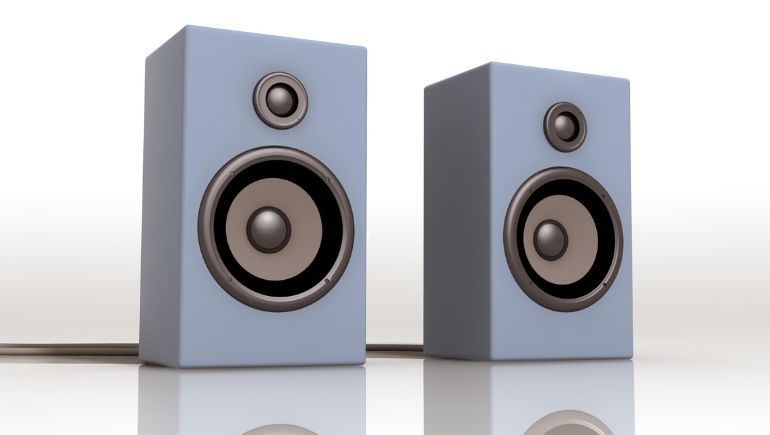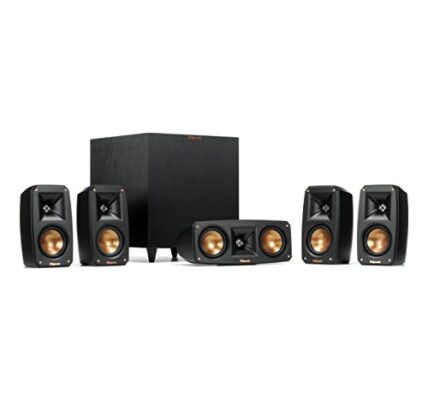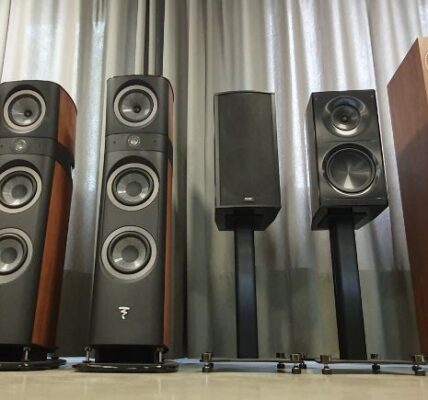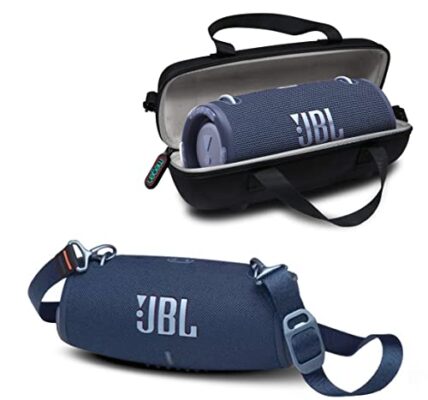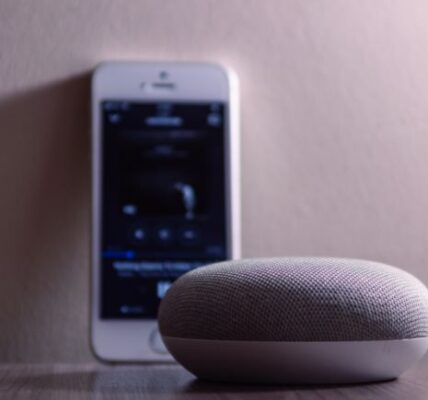The majority of speakers are created with a certain goal in mind. They come in a variety of sizes and forms. Would you like speakers for your tv, a speaker for a certain room, or something a bit more transportable to bring with you on trips? We've compiled a list of the top speakers available right now so you may upgrade your audio system without worrying about your selections. There is also a guide that gives you a better understanding of speakers, helping choose the best speakers for your needs.
Our Top Picks
-
Best Overall: Bose SoundLink Revolve+ (Series II)
-
Best Budget: OontZ Angle 3 Bluetooth Portable Speaker
-
Best for Parties: JBL Boombox 2
-
Best Floorstanding: Sony SSCS3 3-Way Floor-Standing Speaker
-
Best Bookshelf: Edifier R1280T Powered Bookshelf Speakers
-
Best Soundbar: Sonos Beam (Gen 2)
-
Best Outdoor: Polk Audio Atrium 4 Outdoor Speakers
-
Best Smart Speaker: Amazon Echo Studio
-
Best Portable: Bang & Olufsen Beosound A1 (2nd Generation)
Best Speakers Buying Guides
Types of Speakers
It might be challenging to determine which speakers would best meet your needs with the wide variety available. Consider first how you intend to utilize the speakers. Do you want to install a multi-room sound system, create a high-end home theater, or install a high-fidelity stereo system to play your music collection?
Tower / Floorstanding Speakers
Floor standing speakers such as Sony SSCS3 3-Way Floor-Standing Speaker, as their name indicates, usually reside on the ground. The majority stand 3 to 4 feet above the ground and so they are sometimes known as tower speakers. Floor standing speakers can produce greater bass since wider cones make it simpler to generate low frequencies. In light of this, tower speakers work best in broad areas.
Bookshelf Speakers
If you are looking for a speaker for a small space, bookshelf speakers are the way to go. Whilst this kind of speaker can be put on a bookshelf, a speaker stand will provide music that is of a higher caliber. In contrast to a shelf, which absorbs much of the sound the speaker emits, a stand enables music to travel more freely. A couple of bookshelf speakers can function effectively for a stereo sound system, similar to floor standing speakers. A typical example of bookshelf speakers is the Edifier R1280T Powered Bookshelf Speakers.
Satellite Speakers
Satellite speakers are often placed behind or next to your listening zone. They can also be utilized in stereo pairs, they are often employed to enhance other speakers rather than serving as the center of attention. Satellite speakers are frequently fixed to the ceiling or wall in order to prevent having wires run over your listening area. Another alternative is using wireless satellite speakers.
Soundbars
Soundbars such as the Sonos Beam (Gen 2) are often designed to enhance the sound on your TV with a soundbar. They frequently only require plugging an HDMI or audio connection to your TV and attaching a power cord into a wall socket to be installed.
Subwoofers
A subwoofer is a speaker that only reproduces low frequency audio, such as the bass guitar in your songs and the booming bass noises in your movies. If you wish to properly represent the whole audio spectrum, a specialized subwoofer is required because standard loudspeakers are not designed to handle these low frequencies.
In-Wall/In-Ceiling Speakers
You can choose in-wall/ in-ceiling speakers to retain the aesthetic of your space. They operate in the same way as a typical speaker but are put in a frame and installed into your wall. These are fantastic since they can still provide excellent music while being concealed from sight.
Outdoor speakers
There are speakers made specifically for outdoor use that can tolerate the significant changes in environment like temperature and humidity, and some of them can even resist to water.
Frequency Response
The variety of sounds a speaker can emit is measured by its frequency response range. The range of frequencies that the human ear can detect is 20–20,000 Hz. The tone will be lower and vice versa as the number decreases. Most speakers can react to frequencies between 45 and 20,000 Hz. However, a speaker's ability to span a certain frequency range does not guarantee that every frequency will be reproduced with high quality.
"Full-range" refers to a speaker producing the whole auditory spectrum. Due to the difficulty of creating the extremely low frequencies, these speakers are typically pricey.
Despite this, a bookshelf speaker that generates a sizable section of the audioband might nevertheless provide a pleasing listening experience since people are most responsive to the middle frequencies.
Price Range
Budgeting for the speakers, amplification, wiring, and perhaps even their installation is crucial when determining the cost of a set of speakers. The pricing range for speakers alone is quite broad. Costs for some bookshelves, often speakers like the Edifier R1280T Powered Bookshelf Speakers, are under $300. Others cost thousands of dollars but are well worth every cent and more.
Sensitivity
The effectiveness of a speaker is determined by its sensitivity. Loudspeakers with greater sensitivity often produce higher volumes at a given voltage. You may get a rough estimate of the size of amplifier you'll need to power the speakers from here. Decibels (dB) are used to represent this metric with a 2.83 V input.
Power Handling
The maximum amount of electric power that a speaker can handle before being damaged is indicated by power handling. This spec is given in wattage.
You shouldn't be too much if you choose a 200W-per-channel amplifier when your speaker is labeled at 100W as maximum. Most likely, you won't ever give the speakers that much energy. Utilizing an amplifier that is too tiny really causes damage to loudspeakers since it produces distortion with loud-level high frequencies.
Impedance
When pairing a speaker with an amplifier, you must ensure that the amplifier can deliver the current required to support the load of that speaker. This is accomplished by examining the amp's impedance rating, which is measured in ohms. The amp's impedance rating should be less than (or at least equal to) the speaker's ohms.
Connectivity
You can choose between wire and wireless speakers. With the innovation of technology, wireless is becoming more preferable. Generally, the speakers often use Bluetooth like the Bose SoundLink Revolve+ (Series II), some systems also include Wi-Fi like the Amazon Echo Studio, as well as apps to control.
Best Speakers FAQs
1. What identifies excellent speakers?
Each speaker emits a range of frequencies, some of which are louder or quieter than the others. The less difference in loudness across frequencies—or, in other words, the smoother the frequency response is—the greater the speaker quality.
2. What form works best for a speaker?
Curved speakers have superior sound dispersion over a space. There are numerous locations where the sound may be heard. A curved speaker's walls need less vibration than walls for squared-shaped models do.
Conclusion
Consider where and how you'll utilize the speakers before beginning your search for the ideal pair. Determine which type of speaker will suit your requirements. Then, if you can, drop by our shop to try out several models. If not, go through the speaker specifications listed above and pick a model that meets your budget.
